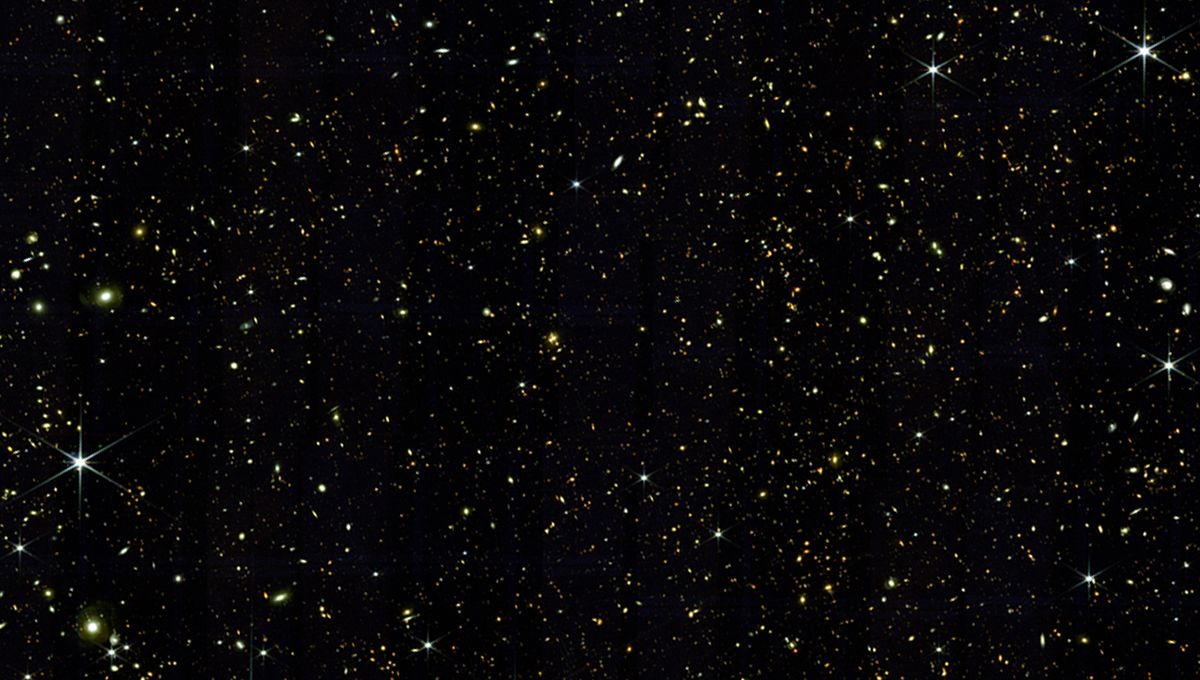
The launch of JWST almost three and a half years ago has opened a new window into the most distant universe. A window that revealed there are a lot more bright galaxies in the first few hundred million years of the universe than astronomers expected. The “Mirage or Miracle” survey aims to study whether these objects are truly as far as was first thought, and in doing so, scientists might have discovered the most distant galaxy yet. The discovery is in a paper awaiting peer review.
They are calling MoM-z14; it is a remarkably bright source whose light comes to us from just over 280 million years after the Big Bang. This galaxy existed when the cosmos was just 2 percent of its current age. That means its light had to travel for 13.53 billion years to reach us, and due to the expansion of the universe, this galaxy is over 33.8 billion light-years away.
Similar to the previous record-holder, galaxy JADES-GS-z14-0 discovered by JWST last year, this MoM-z14 also has a lot of heavier elements such as oxygen, nitrogen, and carbon. This means that it has already had a first generation of stars, the yet-to-be-directly observed Population III, and they have died, peppering the new stars with these elements.
Such a discovery confirms that certain expectations about the initial phases of galaxy evolution might be wrong. These extremely distant galaxies are already evolved, in certain aspects mature, and yet they exist so very early in the universe. The formation of these galaxies is now an even more complex mystery, but all the evidence seems to point to a very quick formation.
The galaxy was visible to the sensitive eye of JWST thanks to its exceptionally bright appearance, due to a massive increase in the star formation rate within the last 5 million years. Surprisingly, though, this is not an enormous galaxy and its emission is not dominated by the supermassive black hole at its center.
The team estimates that this is a dwarf galaxy similar to the Small Magellanic Cloud, which orbits the Milky Way, and it is visible to the naked eye in the Southern Hemisphere. It would have a mass of around 100 million suns and would measure 500 light-years side to side. Our galaxy is over 100,000 light-years across and weighs at least 1,000 times more, dark matter excluded.
The study has been submitted to the Open Journal of Astrophysics, and is available on the ArXiv.
Source Link: "Cosmic Miracle" Is Now The Most Distant Galaxy Ever Seen